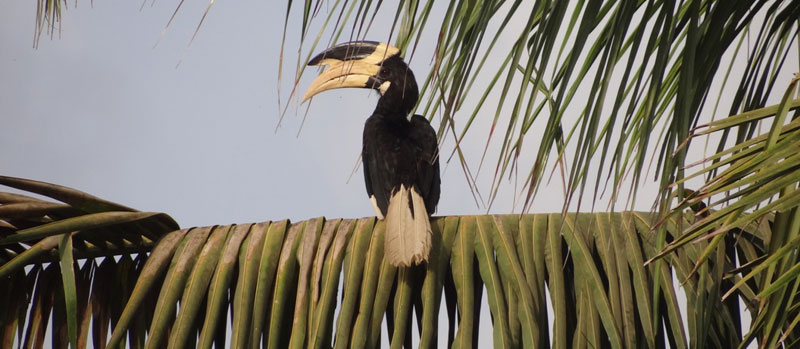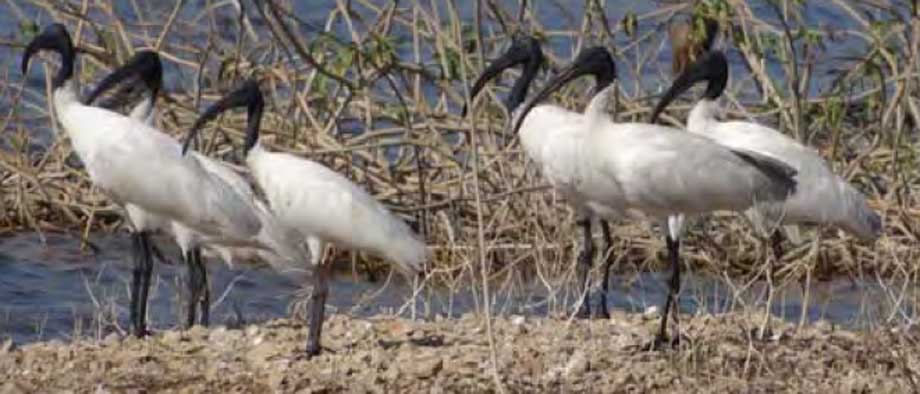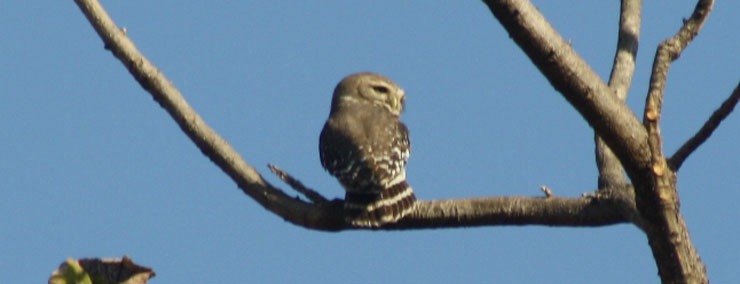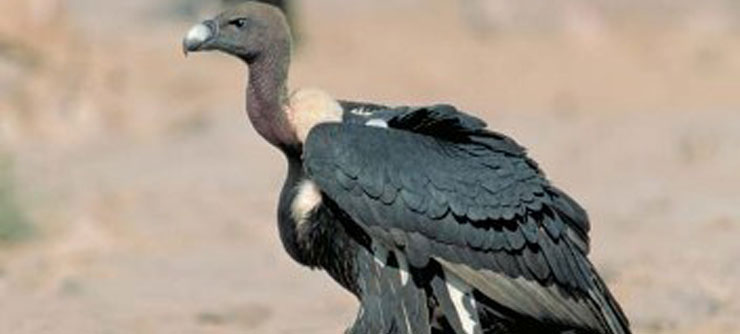Climate Change Can Threaten Asian Bird Survival
By Marianne de Nazareth
12 February, 2013
Countercurrents.org

Malabar Pied Hornbill - by Atul Sathe
Climate Change is very real across our planet and we humans have been grappling with the threat, most often only concerned for our human survival and not the other species that live on the planet. But according to a study done in the UK, the disastrous impact of impending and accelerated climate change could strike our avian friends first. The study undertaken by the Durham University and BirdLife International (of which BNHS is the India Partner) on Asian bird species reveals that many are likely to suffer under climate change and will require not just enhanced protection of important and protected sites, but also better management of the wider countryside. In some extreme cases, birds may be required to be physically moved to climatically suitable areas for survival.
The research, published in the journal Global Change Biology, examined the potential future distribution of species where suitable climate is likely to remain within protected areas and conservation sites, such as Important Bird Areas (IBAs) and also the likelihood of an IBA network to maintain suitable habitats outside protected areas. This study was conducted for 370 Asian bird species whose conservation is a cause of concern, across the biodiversity hotspots of eastern Himalaya and lower Mekong River basin regions. The new study highlights the need for holistic countryside-based conservation of the different species found in different locations.

Black-headed Ibis - BNHS photo library
The countries studied include Bhutan, Laos, Cambodia, Vietnam and parts of India and Nepal. The results show that IBAs in the Lower Mekong region were affected more negatively than those in the eastern Himalaya. Many parts of these regions will experience significant turnover of bird species, which means that they will either colonize new areas or become locally extinct. The study draws upon the work of thousands of experts and organisations, including BirdLife Partners across countries, such as BNHS from India.
The findings demonstrate that survival of species will be dependent upon how conservation sites are managed and whether movement is possible from one site to another. Projections show that at least 45% and up to 88% of the 370 species studied will experience decline of suitable habitats, leading to changing species composition in specific areas.
Co-lead author, Dr Robert Bagchi, School of Biological and Biomedical Sciences, Durham University said, “Even under the least extreme scenarios of climate change, most species we examined will have to shift their ranges in order to find suitable areas in the future.”

Forest Owlet in Melghat, Maharashtra - by Raju Kasambe
The study showed, for the first time, through various possible scenarios that with climate change, it was extremely likely that several conservation sites could be affected, even as the site network as a whole integrated landscape is likely to remain suitable for species survival. This means that the current conservation efforts should not only be strengthened, but also adapted to cover the wider countryside, including non-protected areas.
Co-lead author, Dr Stephen Willis from the same School echoed similar opinion saying, “We need to manage the countryside to help birds disperse. The number of ‘loser’ species in terms of habitat is likely to be 24 times more than the number of ‘winner’ species”.
Co-author, Dr Stuart Butchart, Head of Science at BirdLife International said, “Overall, while these important sites will continue to sustain bird species of conservation concern, climate change will modify which species each site will be suitable for. We need to adapt our conservation management. Protecting natural habitats benefits people too.”
A focus on India
In India there is increasingly severe developmental pressure and rich biodiversity happen to share the same space. In order to conserve the biodiversity and habitats, which is so vital for human survival, it is necessary to have a holistic development model, which ensures the survival of not just protected areas, but also the vast network of non-protected habitats, which link the protected areas and also serve as alternative habitats. Examples of thriving biodiversity including birds co-existing with human settlements in a mosaic of semi-urban, rural and natural landscapes are to be found in every region of India, including the bio-diverse areas of the North-east and Western Ghats.

White-backed Vulture - SAVE photo stock
BNHS Director, Dr Asad Rahmani said, “This study further proves that we need landscape-based conservation, particularly in high biodiversity areas such as the north-eastern region of India. Climate change will impact the distribution and range of many bird species due to the changes in their habitat. Some forest dependent species, which at present may occur in protected areas, may find those areas unsuitable in the coming years due to climate change. Therefore much more holistic landscape-based conservation is required”.
India has a total of 466 IBAs identified till now. Many non-protected areas from diverse habitat categories such as forests, grasslands and wetlands, are either IBAs or have proved to be potential IBAs, when studied by BNHS using the standardized IBA criteria, viz. (i) having populations of globally threatened species; (ii) restricted-range species; (iii) biome-restricted species or (iv) congregatory species.
Marianne de Nazareth Freelance environment journalist and adjunct faculty St. Joseph’s College & COMMITS, Bangalore
Comments are moderated


